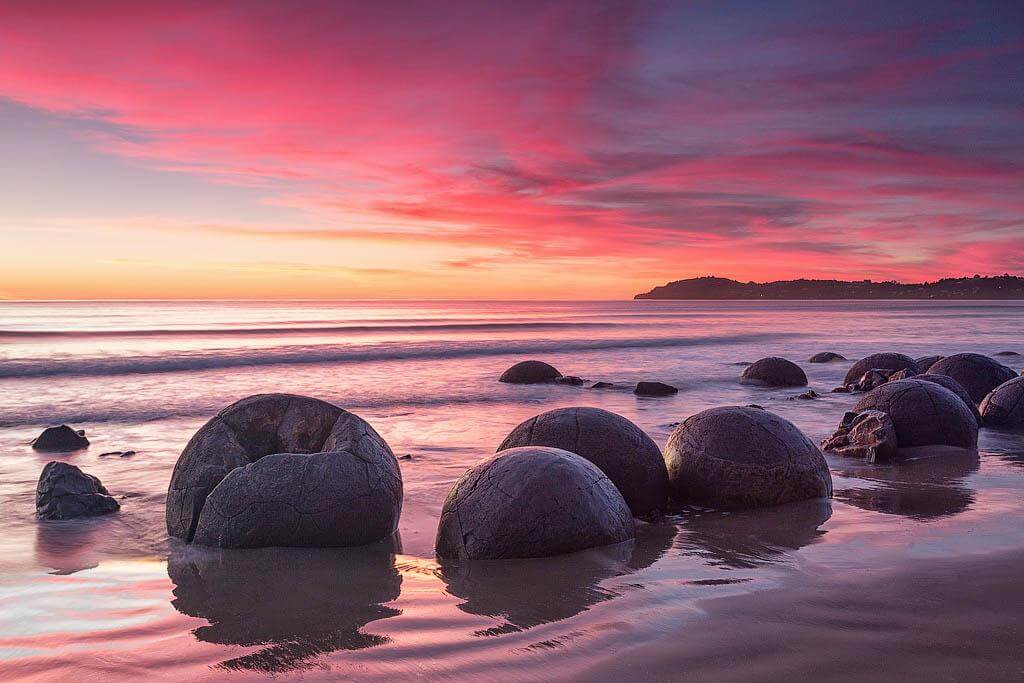The Moeraki Boulders on the South Island’s Koekohe Beach are among the fascinating geological wonders in New Zealand. These wondrous spherical rocks are about 60 million years old, and you’ll find them scattered along Koekohe Beach. Moeraki Boulders is steeped in Maori lore and provides a magical backdrop for anyone walking along SH1.
How special is Moeraki Boulders’ appearance?
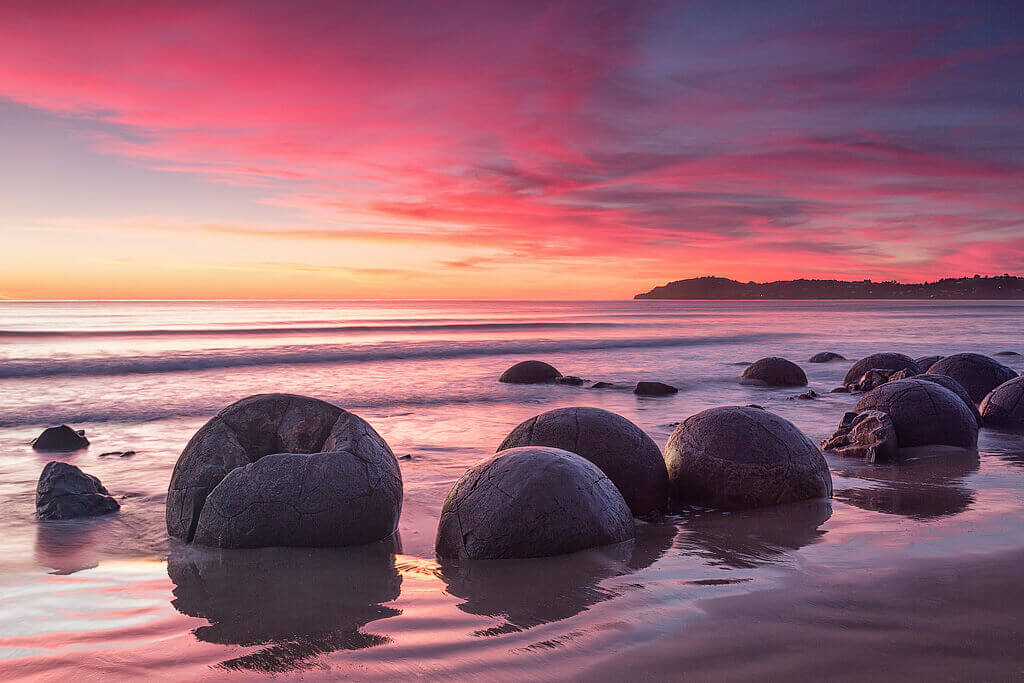
The main shape of these giant rocks is spherical with many different sizes. About one-third of the stones are between 0.5 and 1.0 meters (1.6 to 3.3 ft) in diameter; the other two-thirds are between 1.5 and 2.2 meters (4.9 to 7. 2 feet)
Nearly identical spherical rocks, known as Koutu Boulders, are found on beaches, in cliffs, and below the land surface of the shores of Hokianga Harbor, North Island, New Zealand.
History of unique rocks
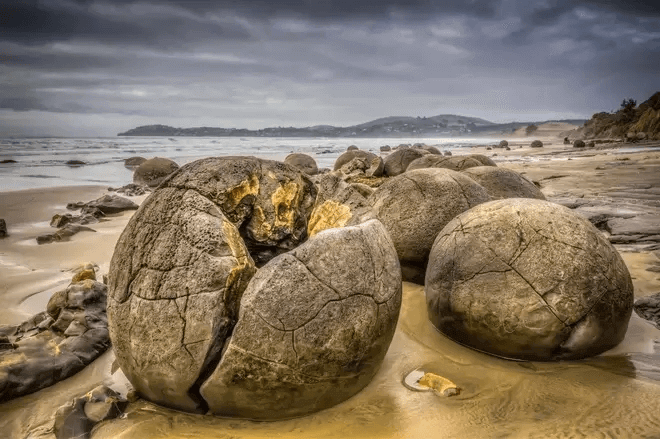
Moeraki Boulders began to form on the ocean floor more than 60 million years ago, and centuries of coastal erosion have revealed a breathtaking view of these strangely large spherical rocks.
The main body of the rocks began to form in the sea mud near the surface of the Paleocene sea floor. This is proven by studies on their composition, especially the magnesium and iron content and the stable isotopes of oxygen and carbon.
Legends told by the Maori
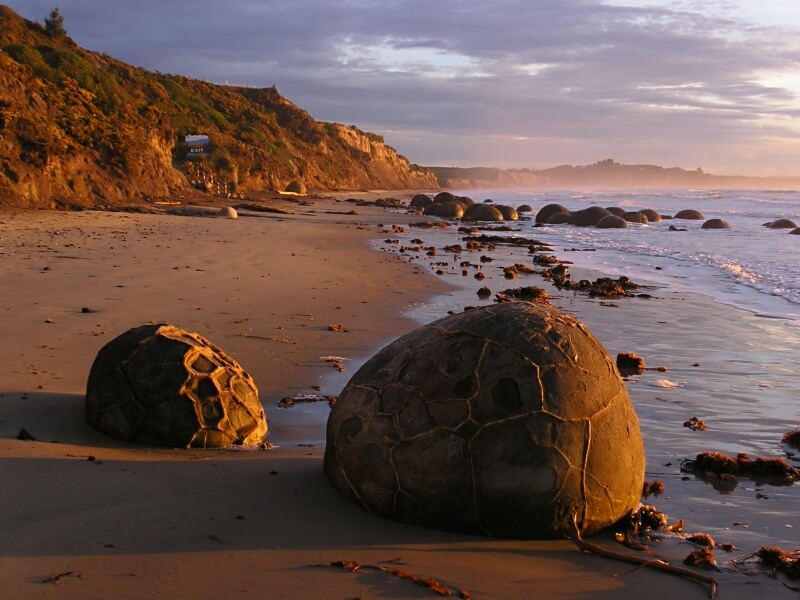
In Maori culture, there is a story to explain the existence of these giant spherical rocks.
Maori stories claim that the Moeraki Rocks on Koekohe Beach were baskets of eels and eels that washed ashore when the legendary Araiteuru Waka (war canoe) was shipwrecked. At the nearby Shag Point, and these items were later turned to stone.
The legend continues to assert that the rock under the ocean here is the hull of the petrified canoe, while a jutting outcrop is the body of the boat’s captain.
I prefer the Maori story. Because these rocks are so beautiful and huge, you will feel small in front of Moeraki Boulders.
Some interesting facts will surprise you!
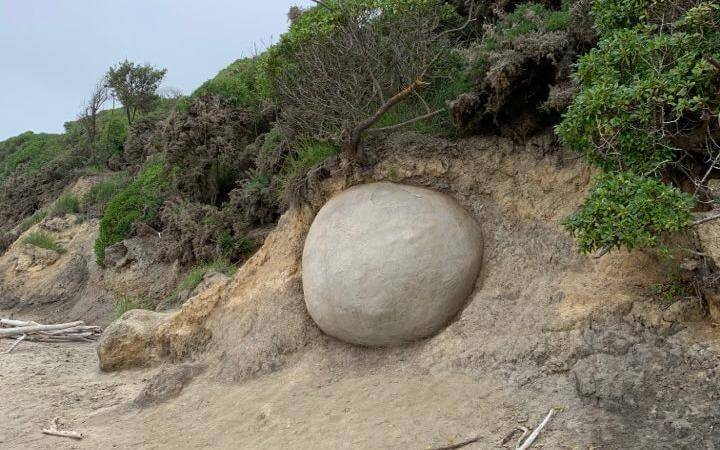
There are more than 50 rocks along Koekohe Beach.
The giant rocks weigh 7 tons and are more than 2 meters wide.
The Maori call these rocks “eel pots”. Some locals call them “thug gallstones”. Other names that have been bestowed on the stones include “giant goblin”, “alien brain”, “giant bowling ball,” and “New Zealand’s Stonehenge”!
Moeraki Boulders is protected by law and may not damage graffiti or removal.
What is the best time to visit Moeraki Boulders?
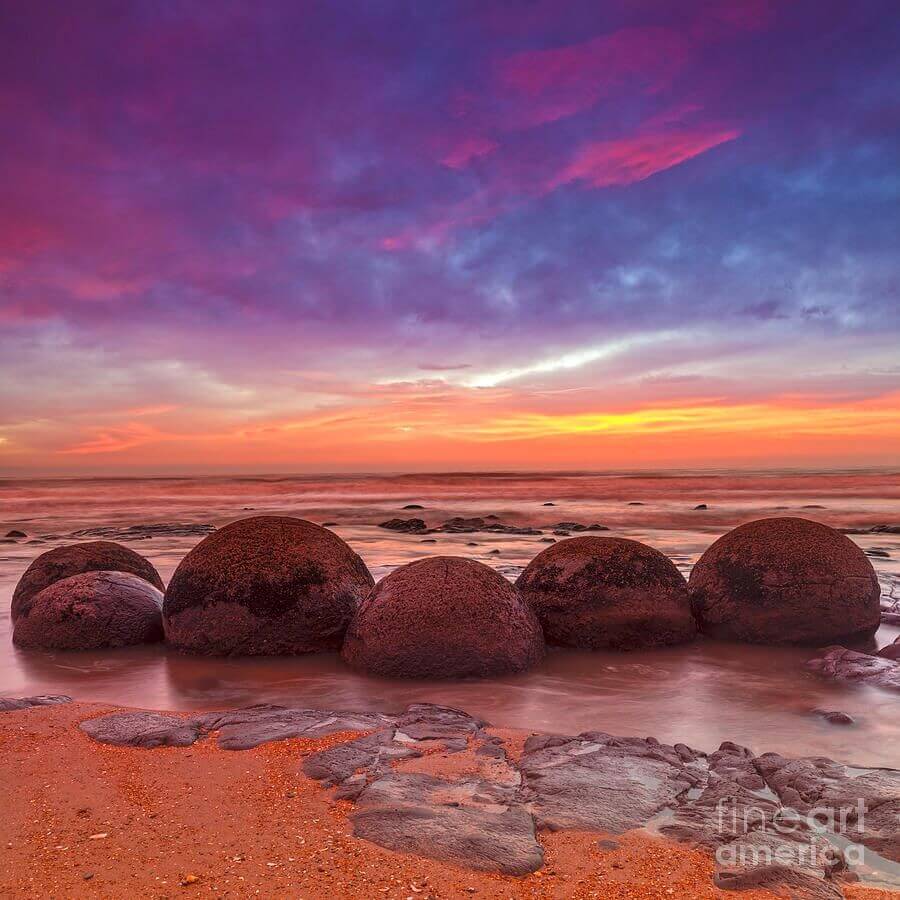
Moeraki Boulders is a year-round destination, but here are a few tips to make your trip even better!
The best time to visit Moeraki Boulders is at sunrise. Watching the sunrise over the round rocks is the best part of this trip!
But there’s also one more thing you have to consider: the tides. Because you won’t be able to reach the beach at high tide, and you will most likely only see the top of the rocks.
Sunset is also a popular time for a walk on the beach, although the lighting isn’t as great as in the morning.
